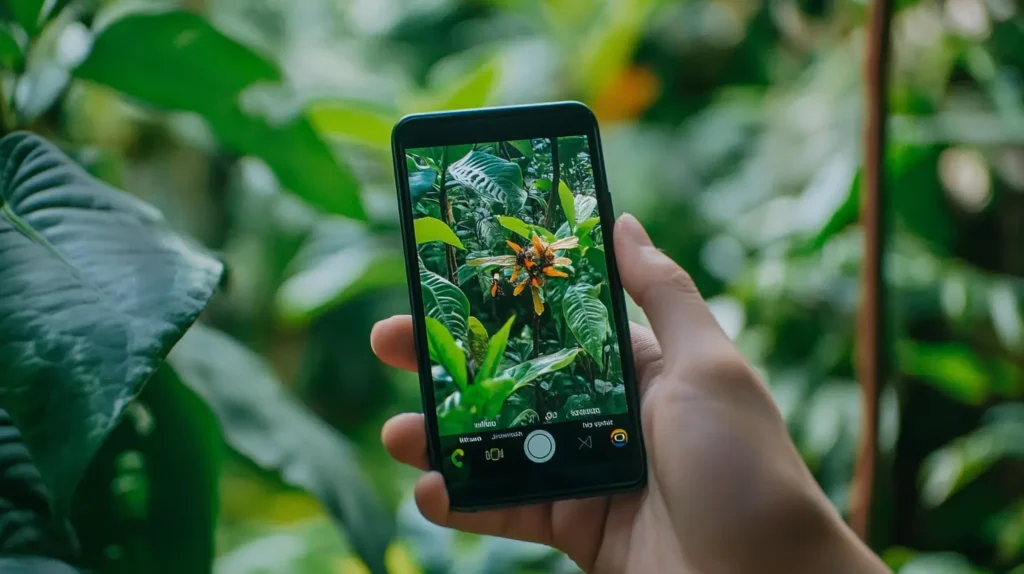Adverts
Have you ever come across an exotic flower, a unique tree or even a small plant at home and been curious to know its name? Identifying plant species may seem like a difficult task at first glance, but technology has made this process much easier. Today, with just a photo on your cell phone, you can discover the name, origin and even the ideal care for a plant.
Adverts
In this blogpost, you will learn about two free apps that accurately identify plants, using only your smartphone's camera. Available for Android and iOS, they have become true allies of gardeners, students, nature lovers and even the curious on duty.
Read on to find out how these tools work and why they’re worth having on hand.
Adverts
Why use apps to identify plants?
Nature is all around us, and each plant has its own beauty and complexity. However, identifying species by observation alone can be a challenge, especially when it comes to ornamental, native or exotic vegetation.
With the advancement of artificial intelligence and digital photography, applications have emerged that can analyze an image of a plant and compare it to botanical databases. Within seconds, the app provides the name of the species, detailed information and, often, cultivation tips and interesting facts.
Whether you want to start a garden, take better care of a pot indoors or simply learn more about what grows in your neighborhood, these apps are great companions to explore the plant world with more awareness and curiosity.
1. PlantNet: A Scientific Project at Your Fingertips
O PlantNet is one of the most recognized applications when it comes to plant identification. Developed as a collaborative scientific project, it has a database fed by experts and users around the world.
How does it work?
Simply take a photo of a plant leaf, flower, fruit or bark with the app open. Within seconds, PlantNet searches its database and presents the most likely options based on the image you upload.
See too:
The user can confirm whether the suggestion is correct and contribute to the community by adding more information. The more people use it, the more accurate the system becomes.
Key Features:
- Quick identification from photos taken at the time or from the gallery;
- Database with thousands of species of plants, flowers, trees and shrubs;
- Organization by geographic regions, facilitating the identification of native species;
- Option to save your observations and track a history of discoveries;
- Clean, objective interface translated into Portuguese.
In addition to being free, PlantNet does not require mandatory registration, which allows for more practical and immediate use. Ideal for those who enjoy exploring nature during trails, walks or even urban hikes.
Who is it suitable for?
The app is recommended for amateur gardeners, botany students, curious by nature and anyone interested in getting to know the surrounding environment better.



2. PictureThis: Identification with a Professional Touch
Another standout among free plant identification apps is PictureThis, known for the speed and accuracy of its responses. Using advanced artificial intelligence, it recognizes species based on visual details in the photo.
How does it work?
The process is similar to PlantNet: you take a photo of the plant and the app identifies it in a few seconds. PictureThis’s unique feature is its more refined design and the additional information provided along with the plant’s name.
The app also offers care tips, watering frequency, light exposure and information on pet toxicity — an important point for those who have animals at home.
Key Features:
- Instant recognition based on high-resolution photos;
- Detailed botanical information, with data on cultivation, ideal climate and interesting facts;
- Diagnosis of plant problems (such as pests or diseased leaves);
- Active community with gardening tips;
- Possibility of creating a “virtual garden” with the plants you have identified and monitor regularly.
PictureThis has a premium version with more features, but its free version already serves the main function of identifying species and providing basic care guidelines very well.
Who is it suitable for?
This app is ideal for who grows plants at home, pet owners who want to avoid toxic species, and users who like a more visually refined and complete application.


Which App to Choose?
The choice between PlantNet It is PictureThis It depends on your profile and what you expect from the experience.
- If you want an app scientific, collaborative and ad-free, the PlantNet is the best option.
- If you prefer an elegant interface, with growing tips and extra resources, the PictureThis may surprise you.
Both are free, safe and offer valuable features for identifying and learning more about the plant world. And best of all, they are available for both Android and iOS, facilitating access regardless of your device.
Conclusion
Identifying plants has never been easier. With the help of apps like PlantNet and the PictureThis, anyone can learn more about the nature that surrounds them, whether at home, in the park or while traveling. In addition to satisfying curiosity, these apps encourage contact with the environment and promote practical knowledge about botany.
Whether it's to know the name of that tree on the sidewalk, find out if your plant is toxic to your cat or learn how to better care for your garden, it's worth downloading one of these apps and starting to explore the greenery around you with more awareness and admiration.
Download, try it out and start your botanical journey right now. Nature will thank you.

